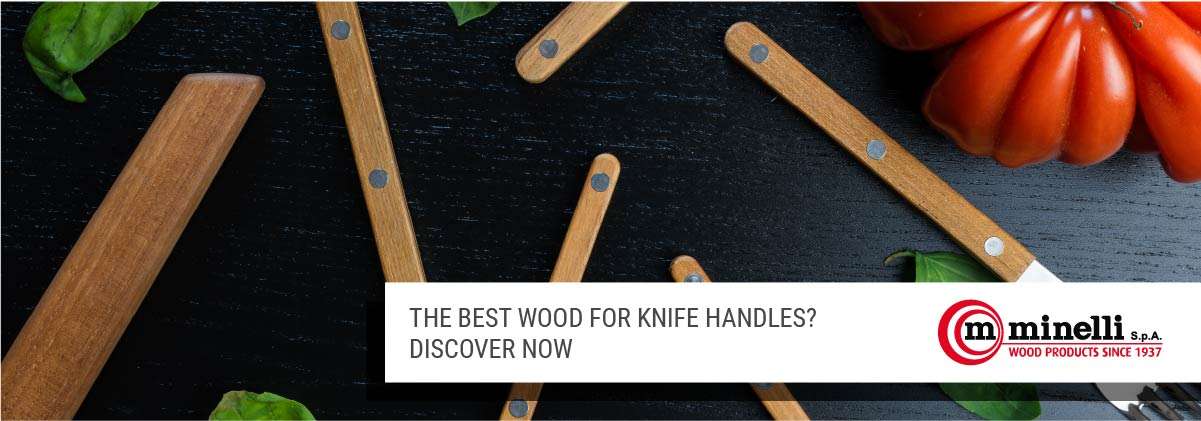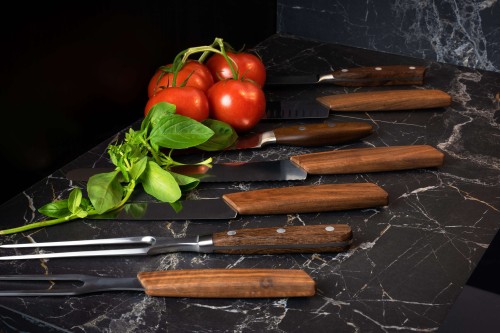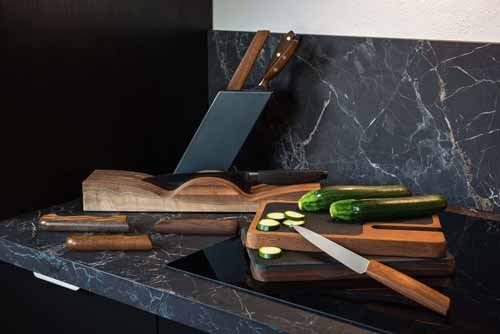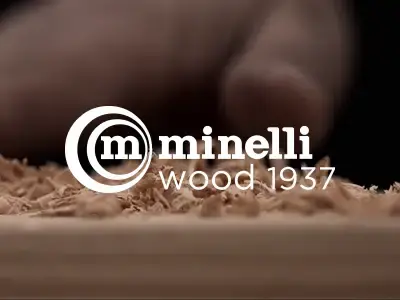 In the world of kitchenware manufacturing, the choice of materials plays a pivotal role in creating tools that not only look great but also perform exceptionally well. When it comes to knife handles, there’s no doubt that wooden handles are an elegant and superior choice.
In the world of kitchenware manufacturing, the choice of materials plays a pivotal role in creating tools that not only look great but also perform exceptionally well. When it comes to knife handles, there’s no doubt that wooden handles are an elegant and superior choice.
In this article, we will explore why wooden knife handles are the best choice for your catalogue and how to choose the best wood for knife handles.
Why choosing the best wood for knife handles is crucial
The first impression a knife makes often comes from its handle. Wooden knife handles exude a timeless and sophisticated charm that can’t be matched by plastic handles. Imagine the elegant appeal of rich, grainy wood in a kitchen display; it instantly elevates the perceived value of your knives. Wooden handles not only look beautiful, but they also age gracefully. This natural aging process only adds character to the handle, making it even more appealing.
Furthermore, the wide variety of available wood allows for customization and catering to various tastes and preferences. Whether it’s the warm, reddish tones of padauk, the deep elegance of walnut, or the light, airy look of birch, wooden knife handles offer an array of choices to complement knife designs. By offering wooden handles, you tap into the enduring appeal of tradition while also keeping up with modern design trends.
Beyond their visual appeal, wooden knife handles provide unmatched comfort and grip. One of the key benefits of using wood is its natural ability to absorb moisture from the hand, preventing slippage during use. This feature is especially important in a busy kitchen where the safety of chefs and cooks is paramount. Wooden handles offer a reassuring grip that enhances precision and reduces the risk of accidents.

Additionally, wooden knife handles are contoured to fit comfortably in the hand. They can be carved and shaped to accommodate different grip styles, ensuring that users have a secure and ergonomic hold on the knife.
Wooden knife handles are also known for their remarkable durability and longevity. Contrary to the misconception that wood might not hold up well under the rigors of kitchen use, many varieties of wood are incredibly resilient. With proper maintenance, wooden handles can last for generations, making them an excellent investment for knife suppliers and users alike.
Wooden handles are less prone to cracking and chipping compared with plastic handles, which can become brittle over time. Moreover, minor wear and tear on wooden handles can often be easily repaired through sanding and refinishing, restoring their original beauty. This durability not only ensures customer satisfaction but also reduces the need for frequent replacement, making it an environmentally responsible choice.

Choosing the right wood for knife handles, however, is crucial. Let’s discuss the characteristics you must look for.
Characteristics of the best wood for knife handles
Choosing the best wood for knife handles involves considering various qualities and characteristics that affect both aesthetics and functionality. Here are some key factors to keep in mind:
Hardness and durability
Hardwoods, such as walnut, oak, and cherry, are ideal choices because they can withstand the rigors of daily use without becoming brittle or prone to splintering.
The wood should be dense enough to provide a stable grip, ensuring the knife feels balanced and secure in your hand.
Grain pattern
A well-defined grain pattern not only enhances the aesthetics of the handle but also adds texture, making the grip more secure.
Exotic woods, such as rosewood, cocobolo, and ebony, are known for their intricate grain patterns, making them popular choices for knife handles.
Stability and resistance to moisture
Knife handles must be stable and resistant to moisture to prevent warping or cracking over time.
Such woods as stabilized wood, which undergoes a process to enhance durability and resistance, are excellent choices for humid kitchen environments.
Aesthetic appeal
The visual appeal of the wood has a significant role in the overall design of the knife.
Consider the color, grain, and finish options to create a handle that complements the knife’s blade and sets it apart from the competition.
Workability
For manufacturers and craftsmen, it’s important to select a wood that is easy to work with while maintaining its integrity.
Some woods, for example, birch and maple, are known for their ease of shaping and finishing.
Sustainability
In an environmentally conscious world, using sustainably sourced wood is not just a trend, it’s a necessity.
Choose wood that is responsibly harvested or consider reclaimed wood for a unique eco-friendly option.
In the competitive world of knife suppliers, offering wooden knife handles can set your catalogue apart from the rest. With their timeless aesthetics, exceptional comfort and grip, and impressive durability, wooden handles bring undeniable value to your product line. Embracing wooden knife handles not only appeals to the senses but also demonstrates a commitment to quality and sustainability.
If you seek premium wooden handles, rely on the Minelli Group’s 80 years of expertise in wood manufacturing. We excel in crafting bespoke wooden components of unparalleled quality and lasting durability.
Feel free to contact us for additional information; we’re here to assist you!








